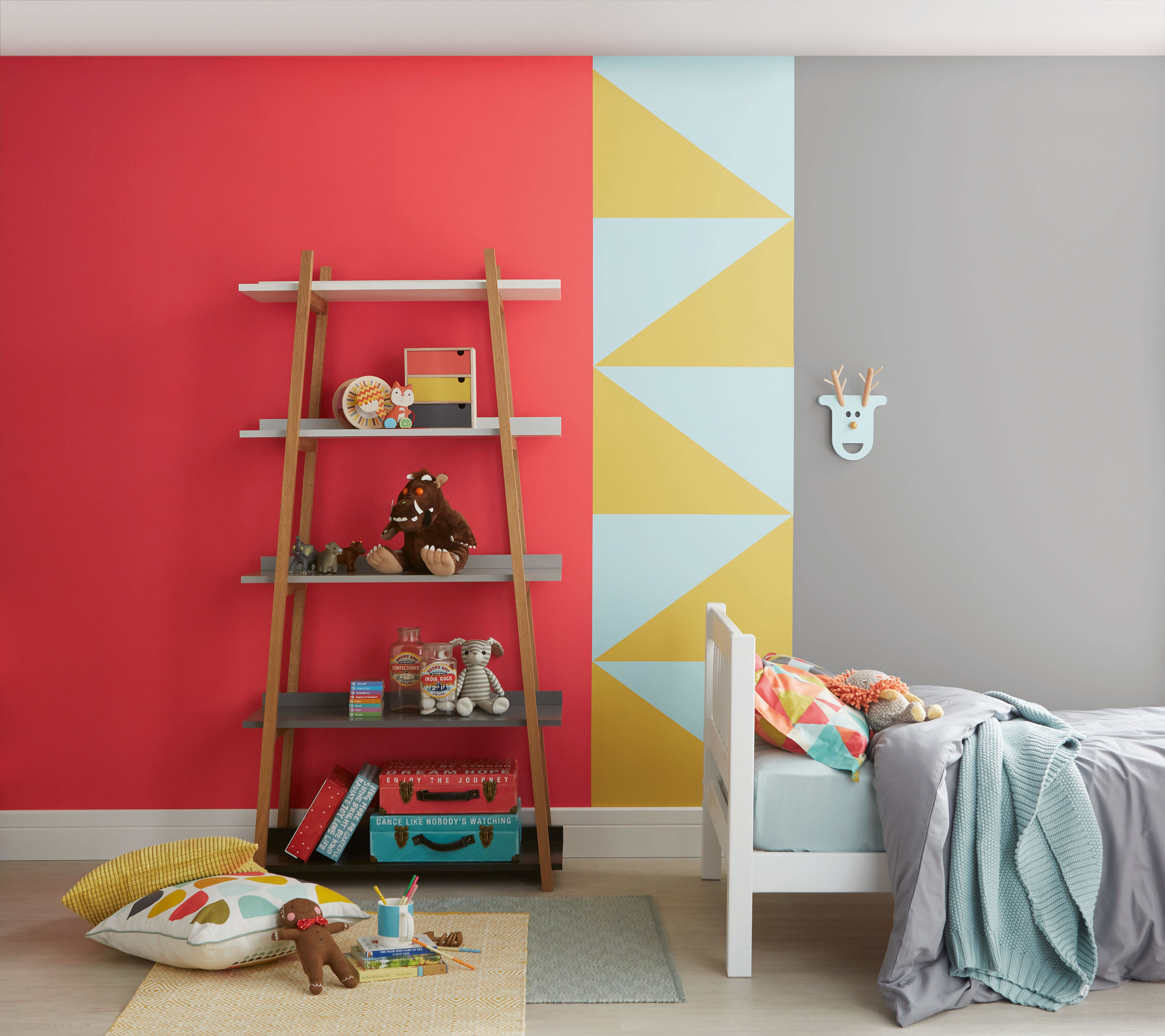
Creating dynamic paint color schemes for kids' bedrooms can be a lot of fun, helping to create a haven that's perfect for sleeping and playing. A lot depends on their age, of course: you can impose bold colors or pretty pastels on toddlers and younger children, but as they get older, they will want to be involved in choosing the paint colors for their rooms, which might mean compromising – or capitulating.
If you are choosing a paint color for a nursery and you don’t know if you’re having a boy or a girl – or want to go down the gender neutral route – there are many pretty shades to choose from; green and yellow are both good options, but rooms decorated in neutral shades can look smart, and can be updated or revamped easily just by swapping out accessories.
Designing a kids' bedroom from scratch? Make sure you go and have a read of our guide to designing a kid's room too and if you are after more bedroom ideas our feature has you covered.
Color scheme ideas for kids' bedrooms
We've sourced our favorite paint color schemes for kids' bedrooms below – from color blocking to two tone and so much more, there's something for everyone.
1. Have fun with stripes
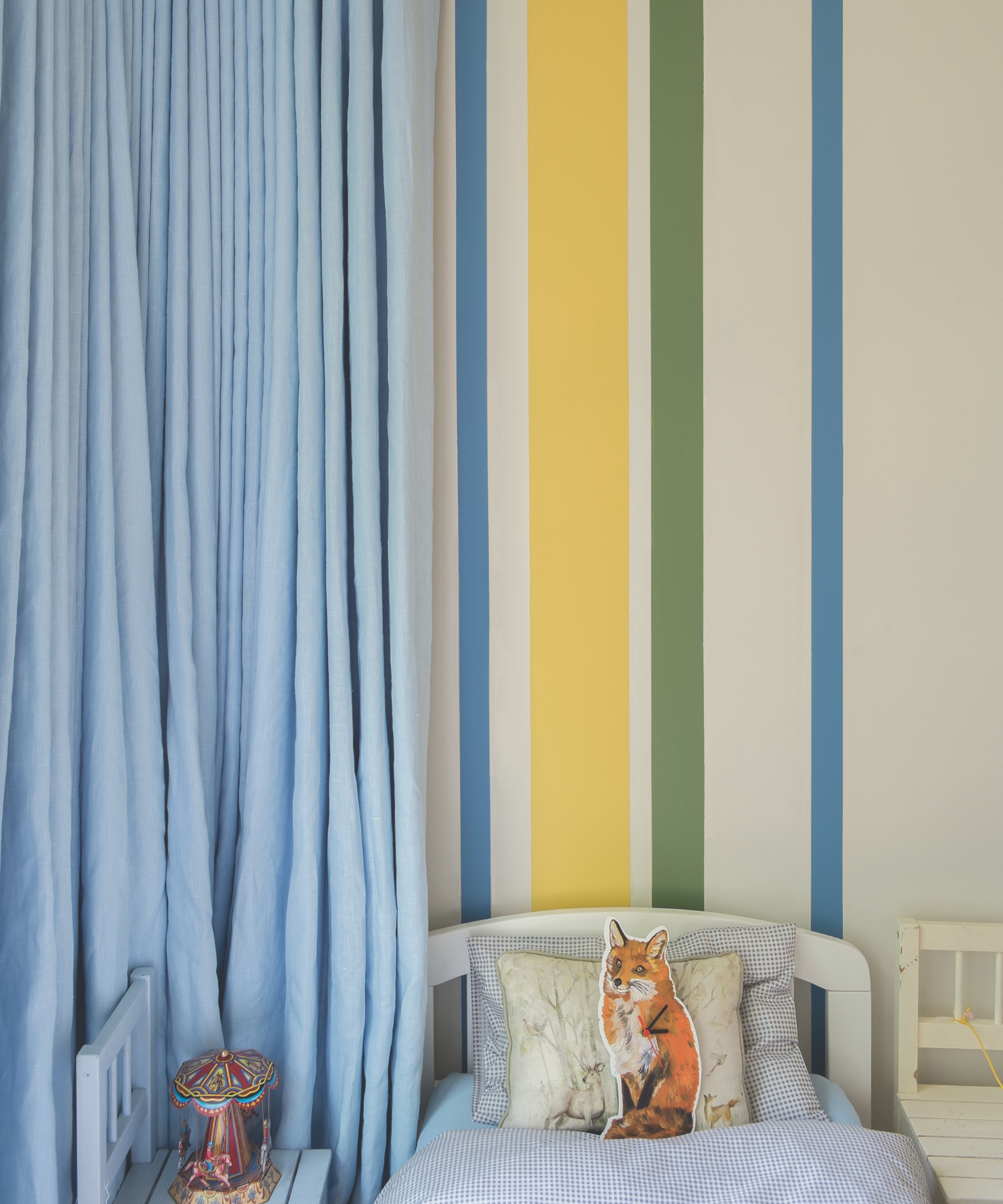
The beauty of decorating kids' rooms is that you can really have fun with color schemes and design features. Stripes are an absolute winner especially if it's hard to pick a single shade – opt for many instead!
The other advantage is that they elongate your view and create the illusion of height – ideal if the ceiling is low. For extra design points make the stripes various widths.
2. Try two shades in the same tone
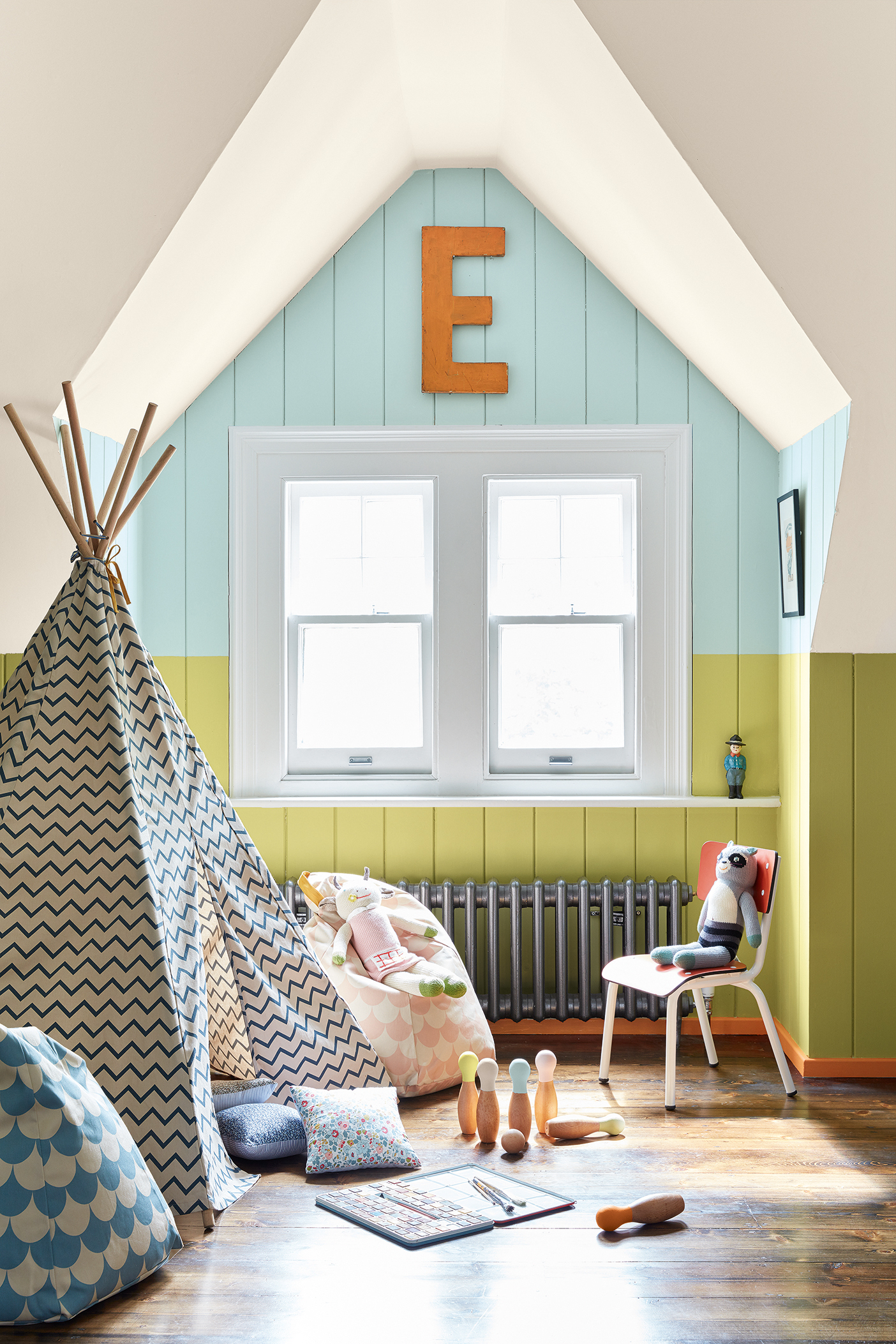
When using two colors next to each other, make sure you pick similar tones. This will create a balanced look that works like a dream. Add a third, accent shade, whether bold (to complement a pale scheme, as here) or soft (to take the edge of a bright scheme).
The shades used here are Brighton 203 (top wall), Pale Lime 70 (lower wall), Slaked Lime 105 (ceiling) and Marigold 209 (skirting), a zesty orange trim that looks fabulous against the other colors. You can also pick out accessories in this shade.
Before you start picking out your paint, go and have a read of our roundup of the best paints for kid's rooms.
3. Paint a pattern

Who needs wallpaper when you can create your own designs with paint? This look can easily be recreated with four paint colors – choose them with your child to get them involved – and a roll of masking tape. Geometrics are also a big trend; their simple design will delight your kids – and they're easy to achieve.
We especially like Quick Kiss in Feature Wall matt (main wall), Mustard Jar, Granite Dust and Chance matt emulsion, all from Crown Paint.
If you are a DIY-phobe and you would much rather just whack up some wallpaper than (fail) to paint patterns, go and check out some of our fave kids' bedroom wallpaper design ideas.
4. The grey solution
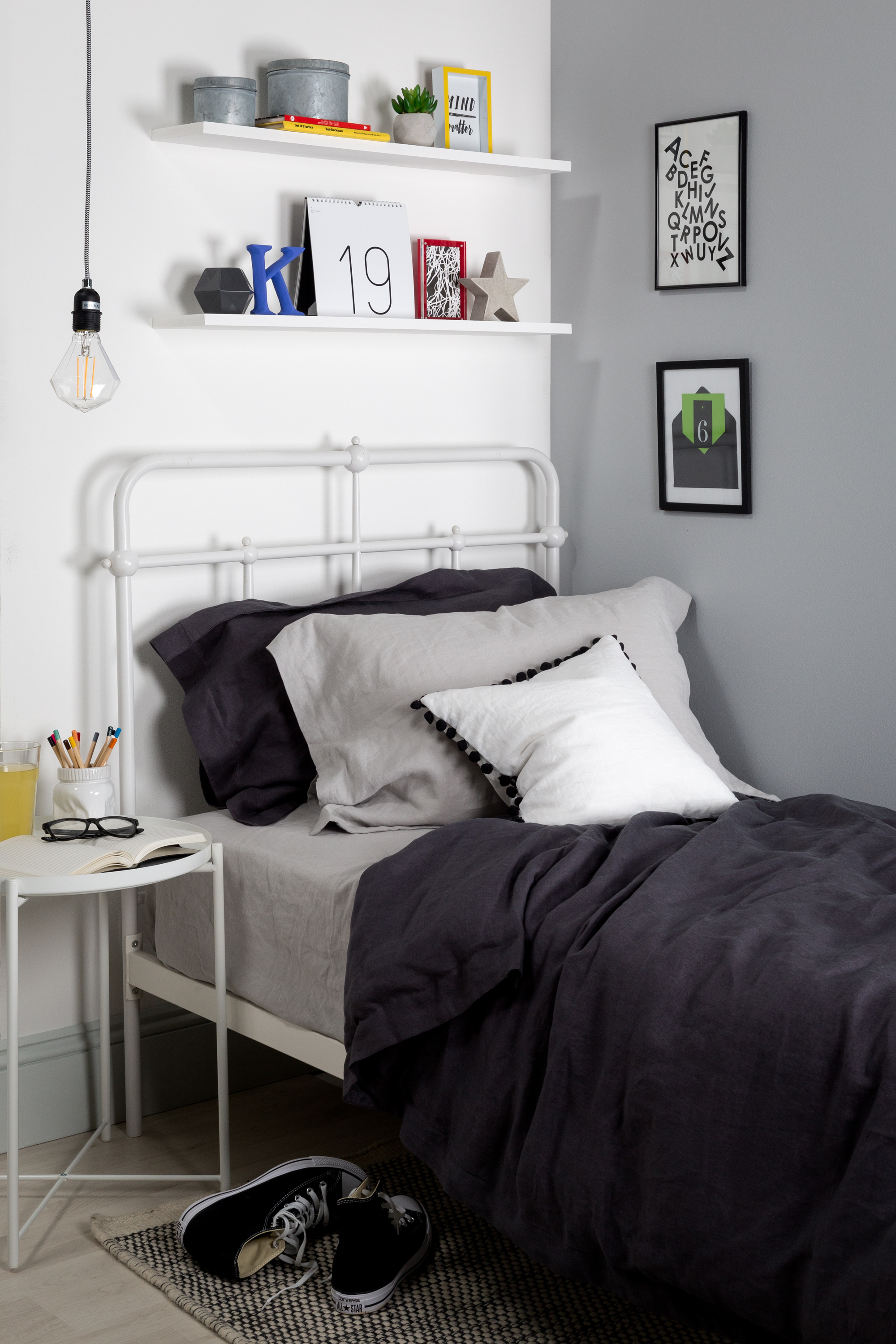
Older children's rooms can be hard to get right, since teens often seem to like darker, moodier colors, whether they suit the room or not. This is where grey can come in: it's an elegant color that can appeal to both them and you – and if you combine it with white paintwork elsewhere and a few colorful accessories, it creates a fresh finish.
For a similar grey try Dulux’s Warm Pewter matt emulsion with Leyland’s Pure Brilliant White matt emulsion. The 100 per cent Pure French bedlinen in Light Grey and Midnight Grey is from Soak & Sleep; prices start from £30 for a pair of Oxford pillowcases.
See more great grey bedroom ideas for grown ups, too.
5. Pick a soothing pastel for newborns
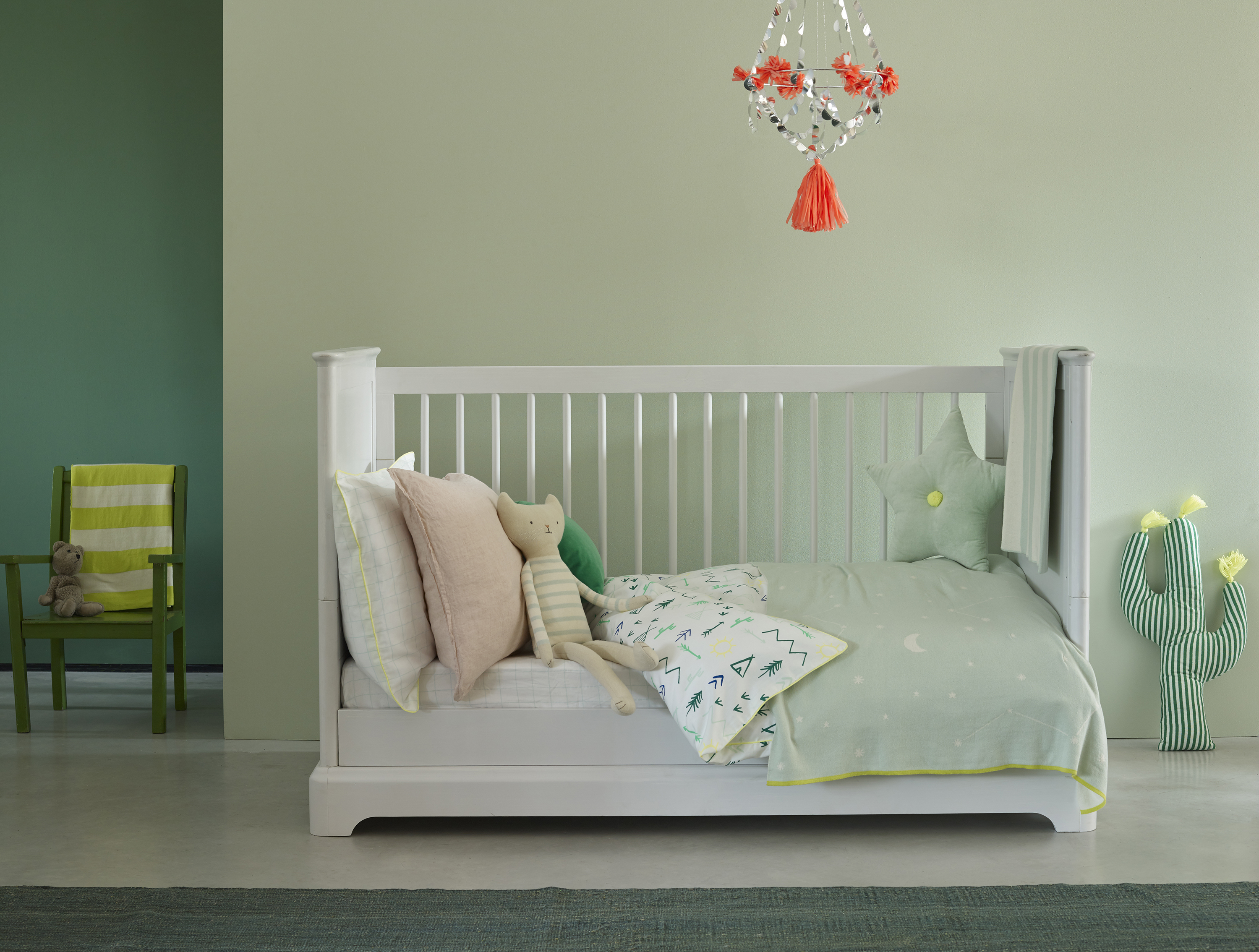
Calming and mellow, green, known for its relaxing properties, will create a nursery that feels restful (for you, if not the baby).
This lovely chalky Sapling Green paint from Earthborn is ideal if you don’t want a gender specific color. Their paints are eco-friendly and have little or no smell, making them ideal for nurseries. Team with green patterned bedding and pastels for a toning scheme or with pops of yellow and orange for a brighter, contrasting feel.
For more nursery room ideas, check out this inspiring gallery.
6. Go 50:50 for a contemporary finish
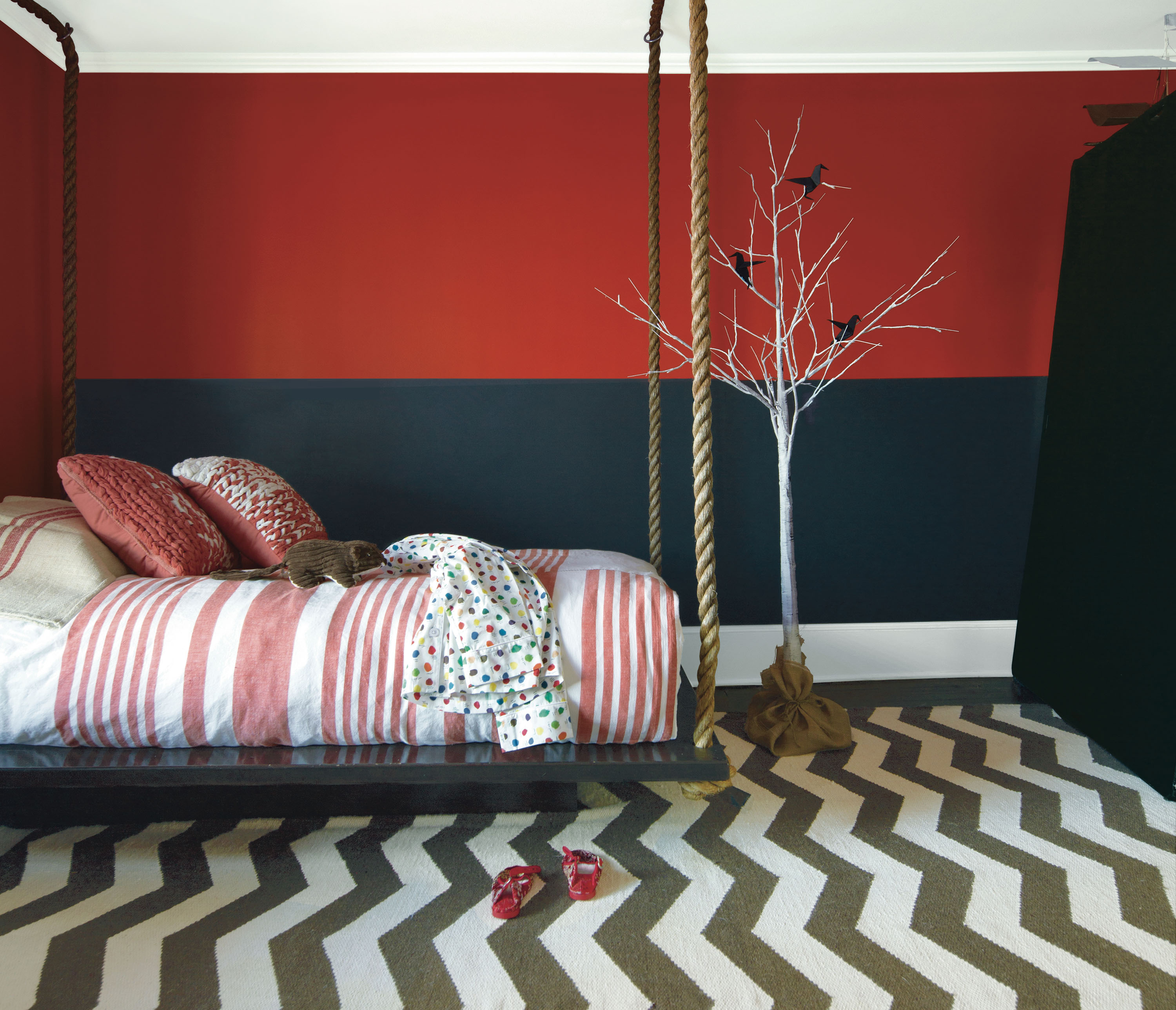
Can’t decide between two favourite colors? Why not go for both? The color blocking effect can be very stylish, and will add interest in a boxy room.
Use the grounding, darker color, Witching Hour (2120-30) on the bottom half of the wall, and use the lighter or brighter shade, Million Dollar Red (2003-10), on top to make the ceiling feel as high as possible. Then choose bedding and accessories to match and complement the scheme.
7. Never miss with a mid-toned blue
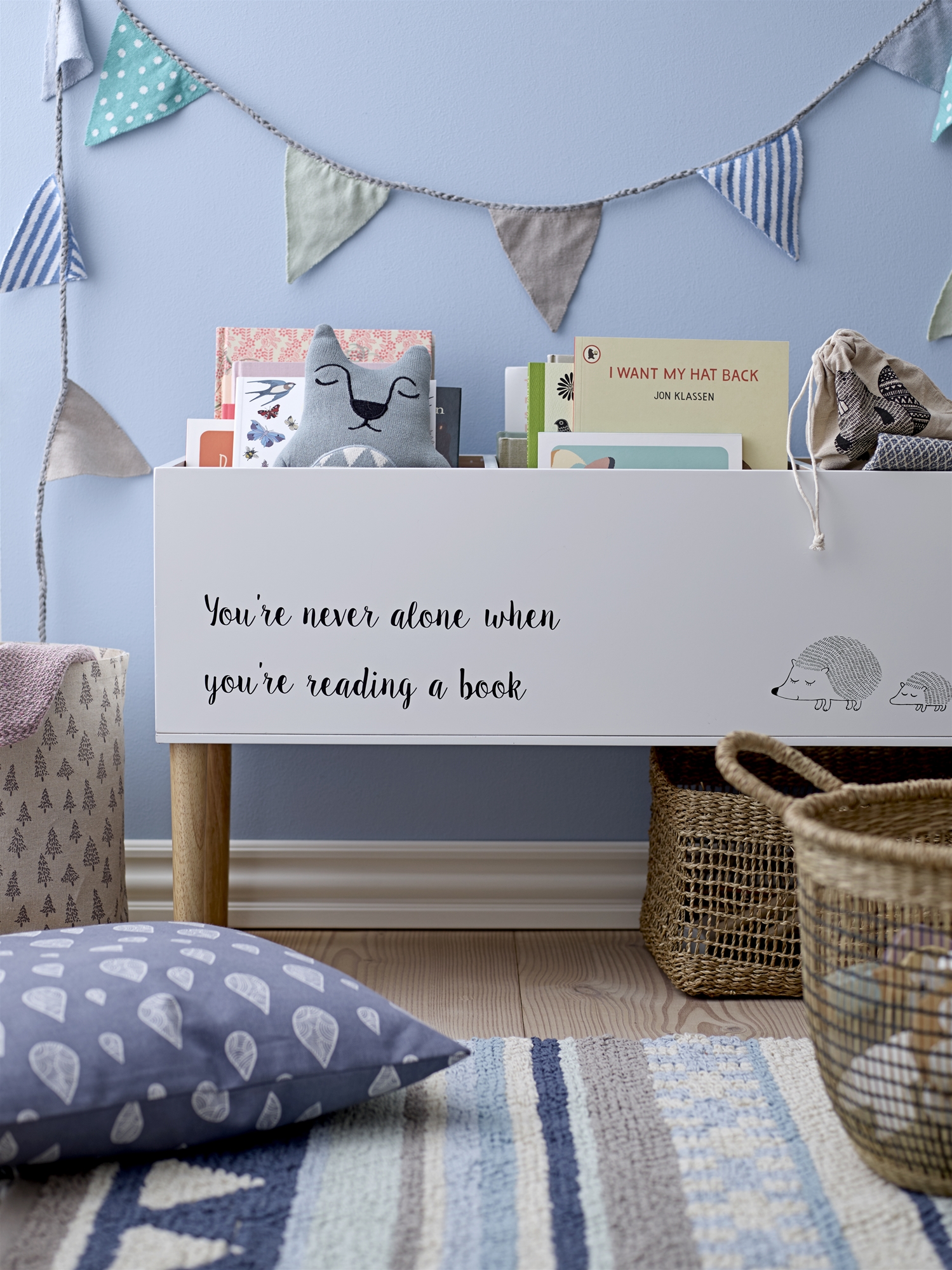
You can’t beat a mid-toned blue: gentle on the eye and easy to team with bright accessories, it’s a fail-safe choice that can be easily updated as your child grows.
For a similar shade try Farrow & Ball’s Lulworth Blue No.89 Modern Emulsion, available at Homebase. It’s washable, stain and scuff resistant, making it ideal for a child’s bedroom. Children’s book box in white, from Out There Interiors.
8. Paint the furniture
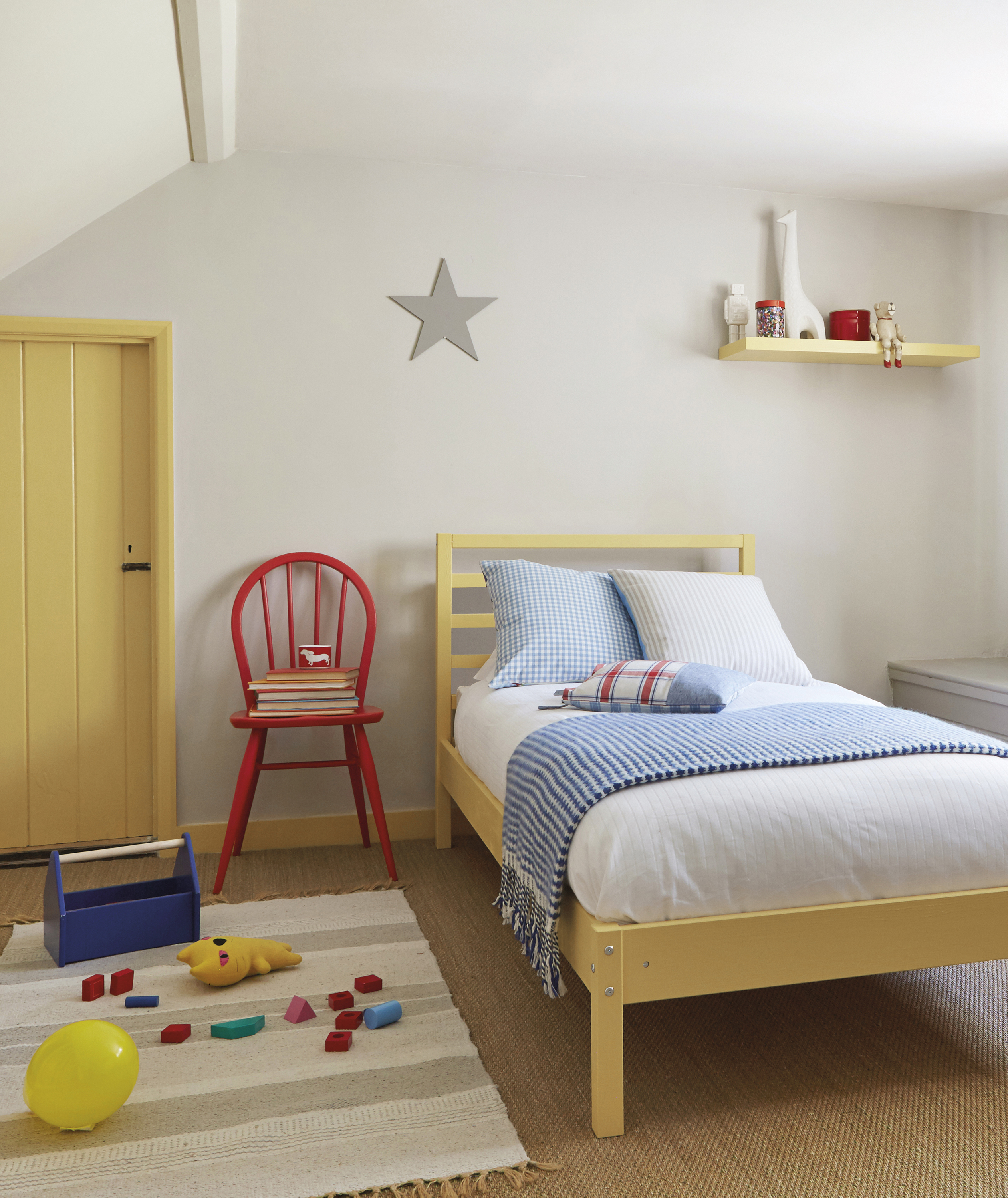
Painting your woodwork and furniture is a quick and affordable way to add color to an otherwise neutral scheme. Choose one main color then two accents. Here, the red is used minimally as an accent because it is such a bold shade. The blue bedding and throw add a second, subtler accent color; pale green would work equally well.
This cheery Ming Yellow looks fabulous against the Greige Light walls and Firecracker Red chair, all Sanderson Paint.
We have an easy to follow step-by-step guide to painting furniture if you fancy giving it go yourself.
9. Get creative with brush strokes
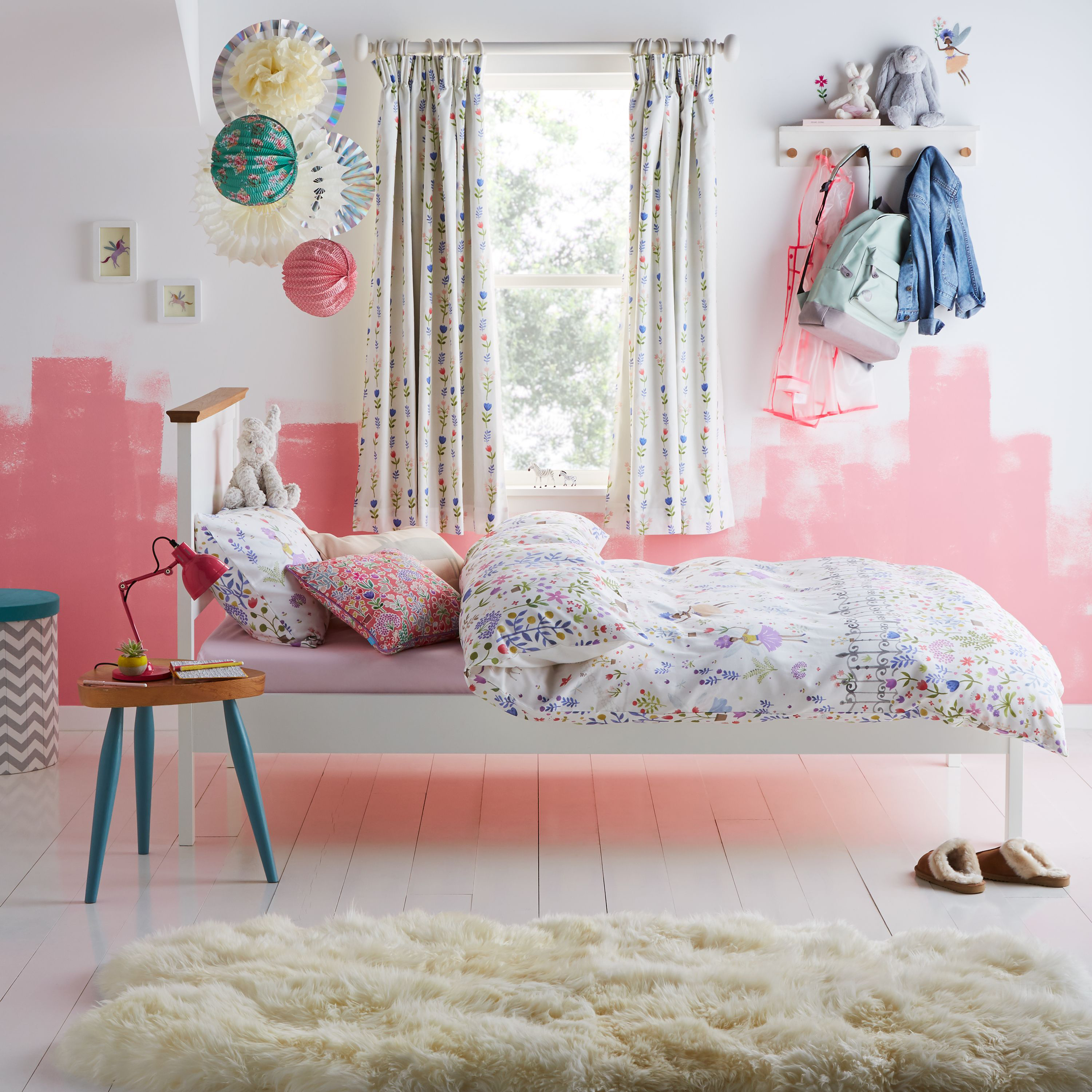
This very effective look can be easily achieved with a wide brush or a roller once you have a plain colour base – a white one, for example. Paint up from the skirting board in your chosen shade to about half way up the wall. The rougher the edge the better for this fun effect.
This pretty petal pink is called Cherry Glow by Sanderson. Country Fairies embellished duvet cover and pillowcase set, £40, Little Home at John Lewis.
10. Co-ordinate effortlessly with neutral walls
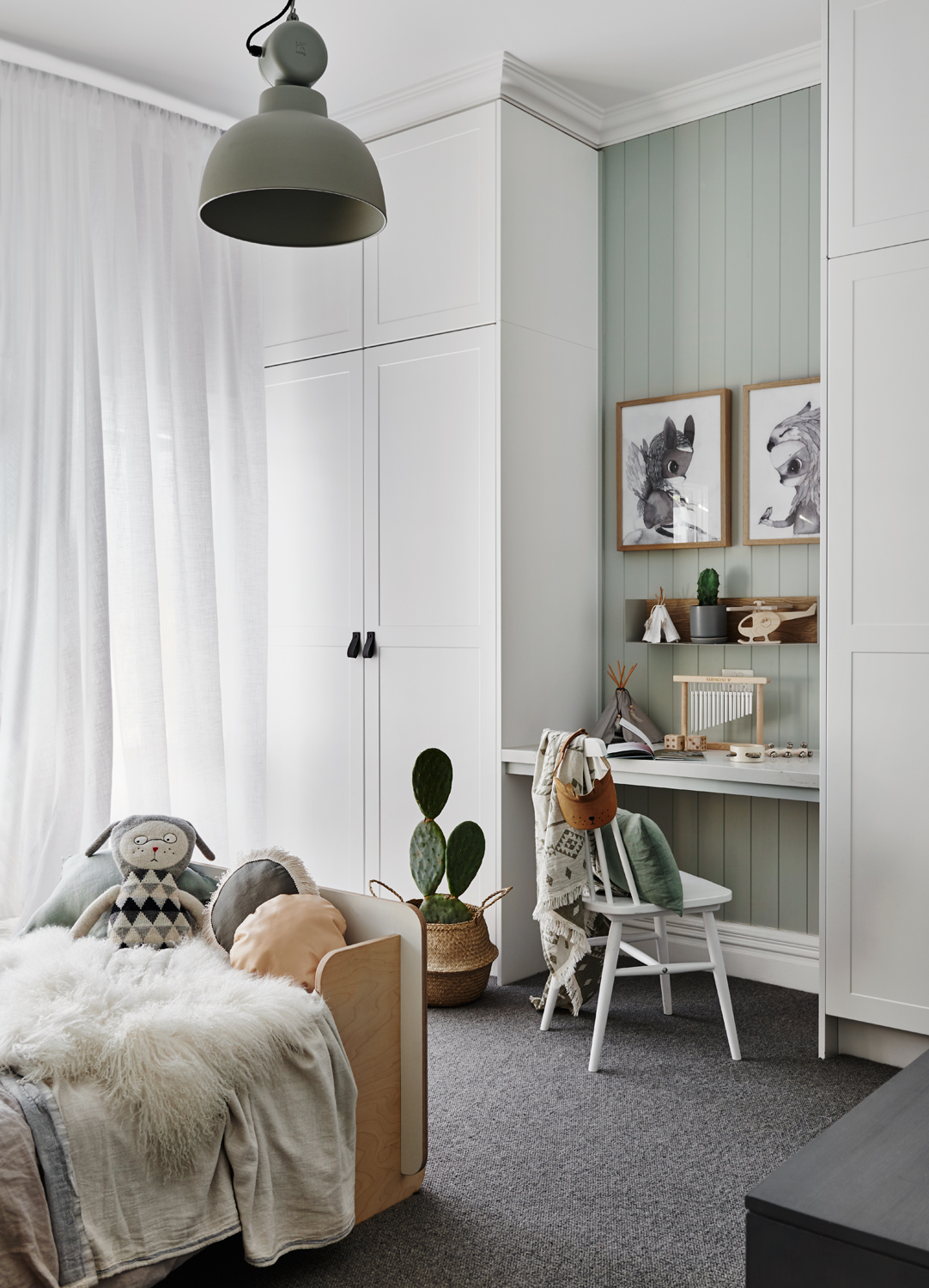
Warm taupe or soft green shades are ideal paint color schemes for children's bedrooms and nurseries, especially if you don’t want to find out your baby's gender before birth – or just want a gender neutral look that's easy to update.
These soft shades work very well with white, and you can pair them with accessories in both pastel and bold shades if you want to add a touch of color.
11. Let them have fun with a chalkboard wall
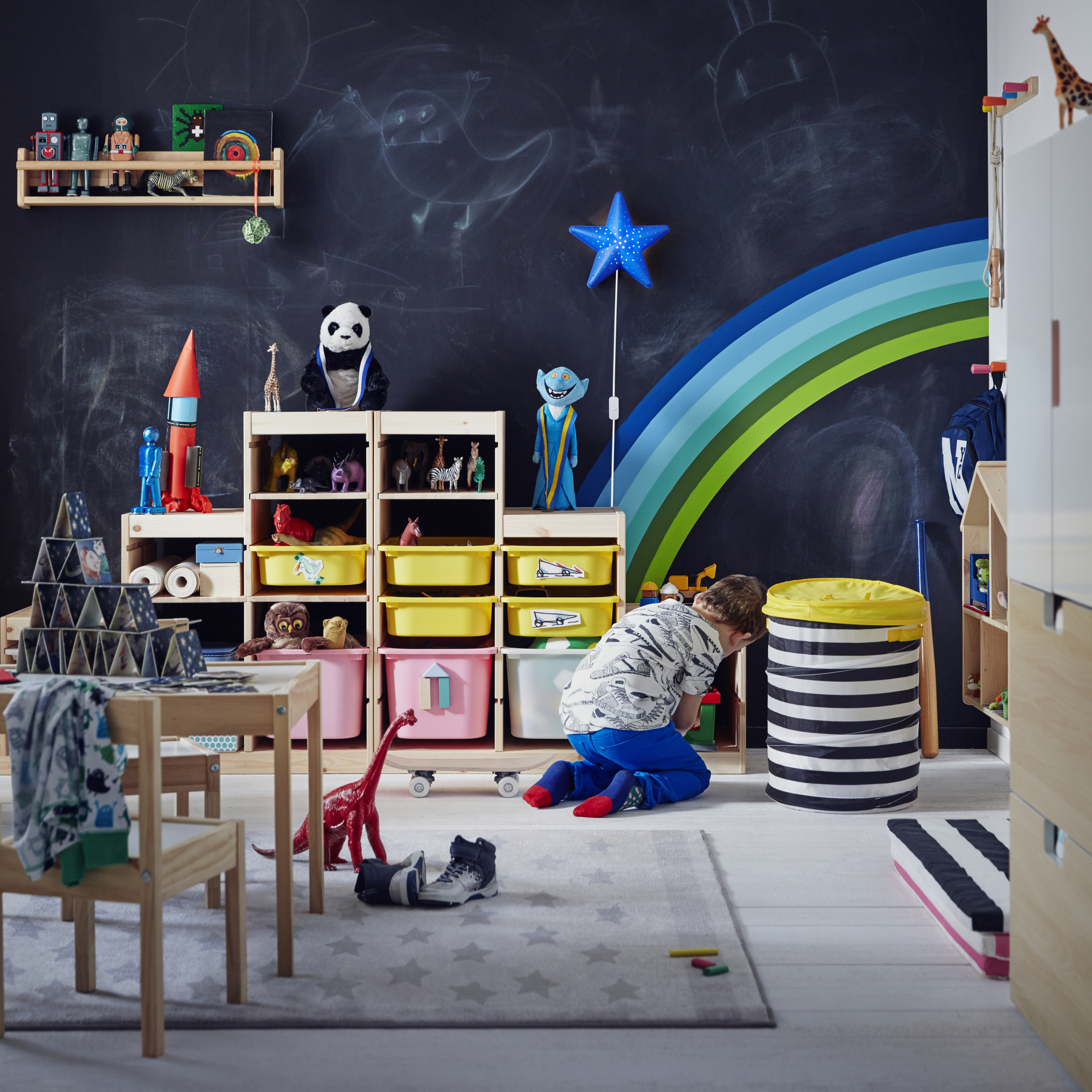
Kids love a chalkboard wall to write and draw on – it will keep them occupied for hours, we promise! Just remind them the scrawling is for that wall only and not the living room...
You can buy the paint from B&Q, it works with all conventional chalks and liquid chalk markers and can be easily wiped after. It’s shown here with Ikea’s children’s bedroom range.
Head over to our tips on how to create a chalkboard wall for more of an in depth guide.
12. Use geometrics for contrast
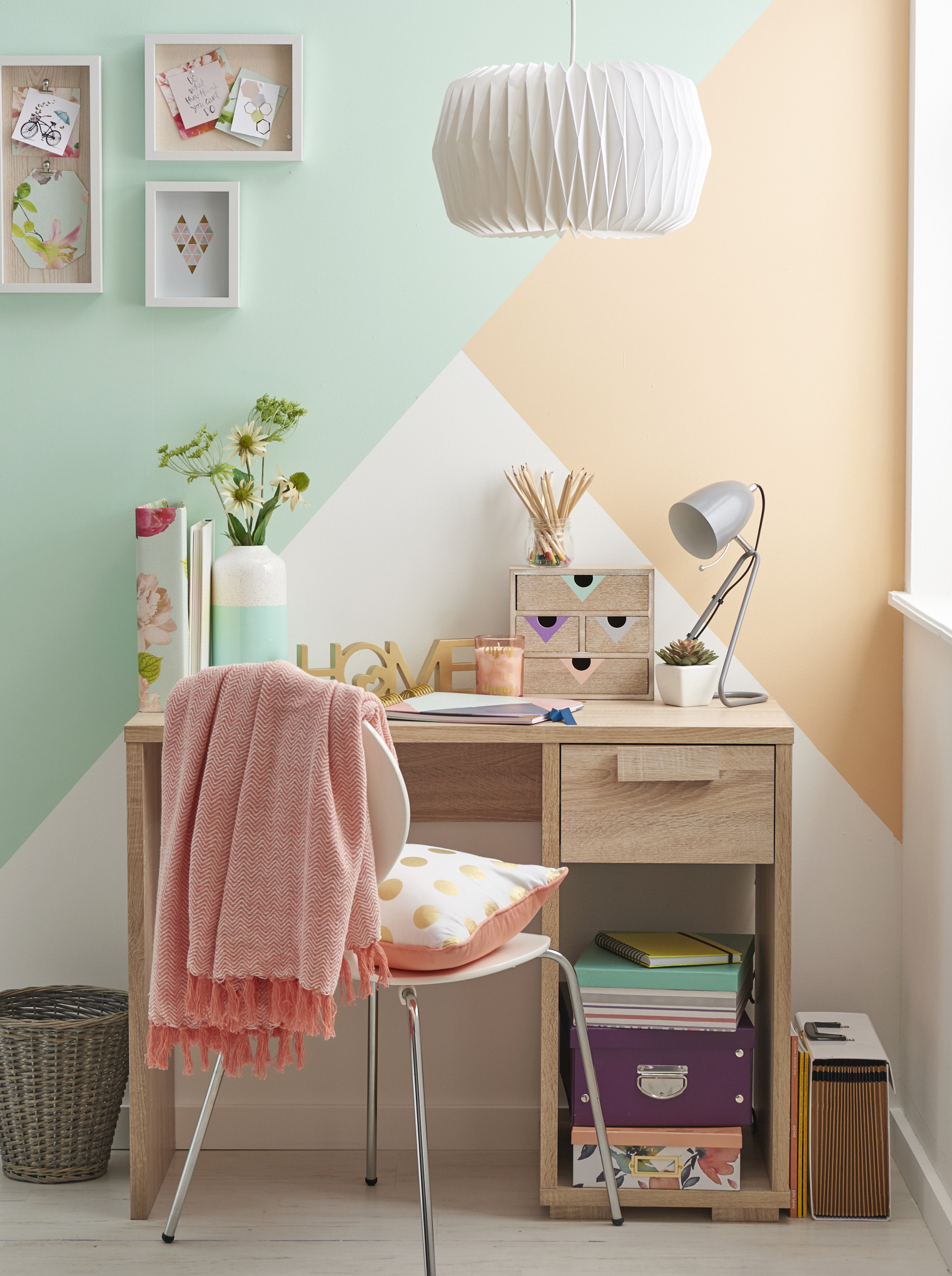
Color-blocking is a great way to add interest to a child's room, without splashing out on expensive wallpaper designs. For a calming look, choose soft, toning shades; for a bolder scheme, pick out primaries or shocking contrasts.
To recreate this easy-on-the-eye color scheme, choose two pretty shades, such as Mint Crisp and Peach Blush, shown here. Mask off the areas and paint each one individually. Wait for a section to dry, then do the other color. It’s a great way to add a refreshing touch of color to a child's bedroom. Other items shown also available at Wilko.
13. White can work in a kid's bedroom
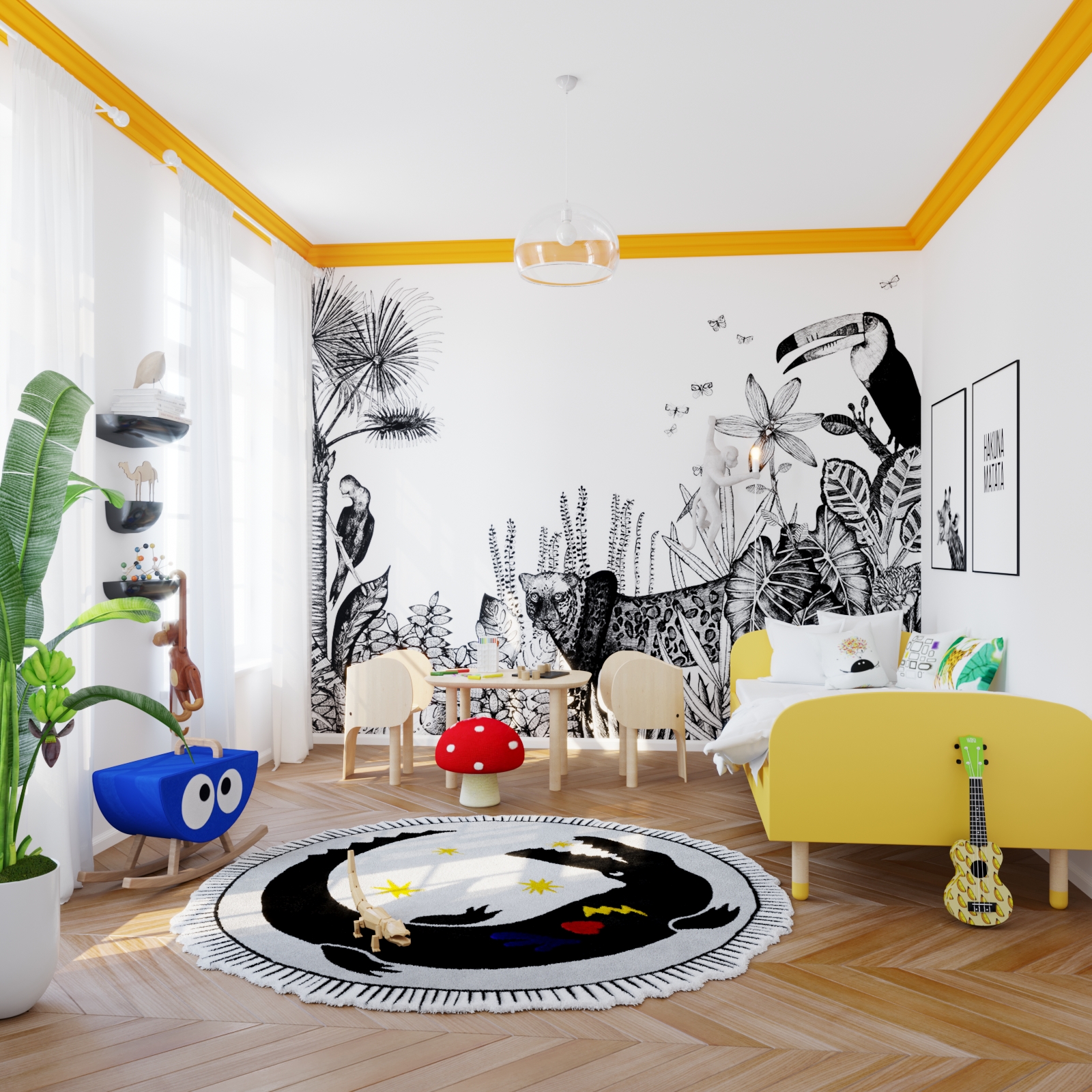
White does not have to be boring! It can be a great color choice and is great value, practical and easy to touch up when sticky hands have been touching it. We recommend adding color by accessorising with bright detailing, such as in woodwork or just cushions and throws. Plus you can enliven a white scheme easily with a stick-on mural.
Homebase have a Purely Matt Brilliant White that’s ideal if you are on a budget. See more mural design ideas in our gallery.
14. Try color blocking to zone a room
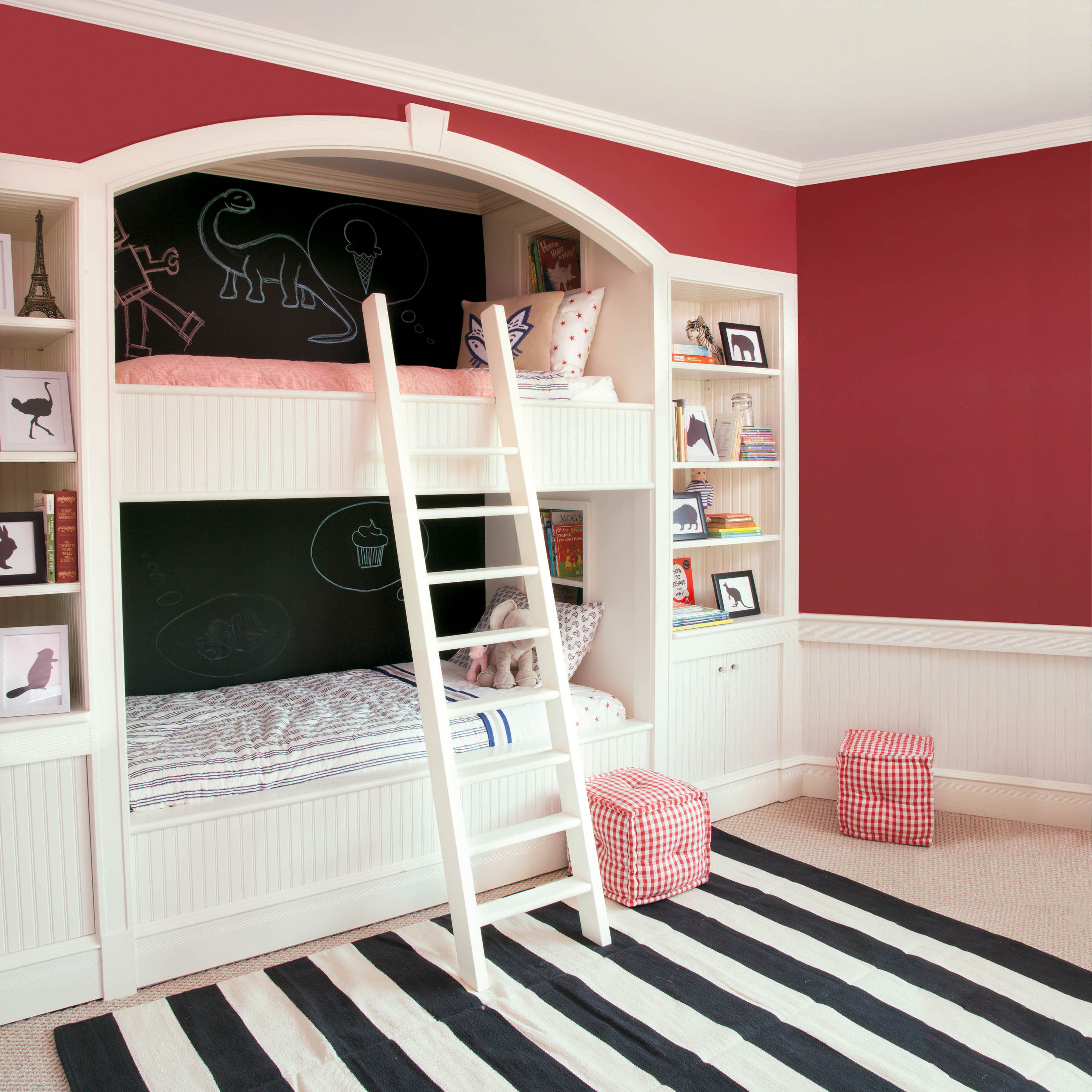
We gave you a taste of color blocking above, but it isn't just about creating pattern; you can use it to great effect to zone or highlight different areas of a room (as shown here, with the two different color blocks behind the beds and around the beds). Use contrasting shades to add drama, and different tones for each zone that you want to create.
15. Paint the ceiling in a kid's bedroom
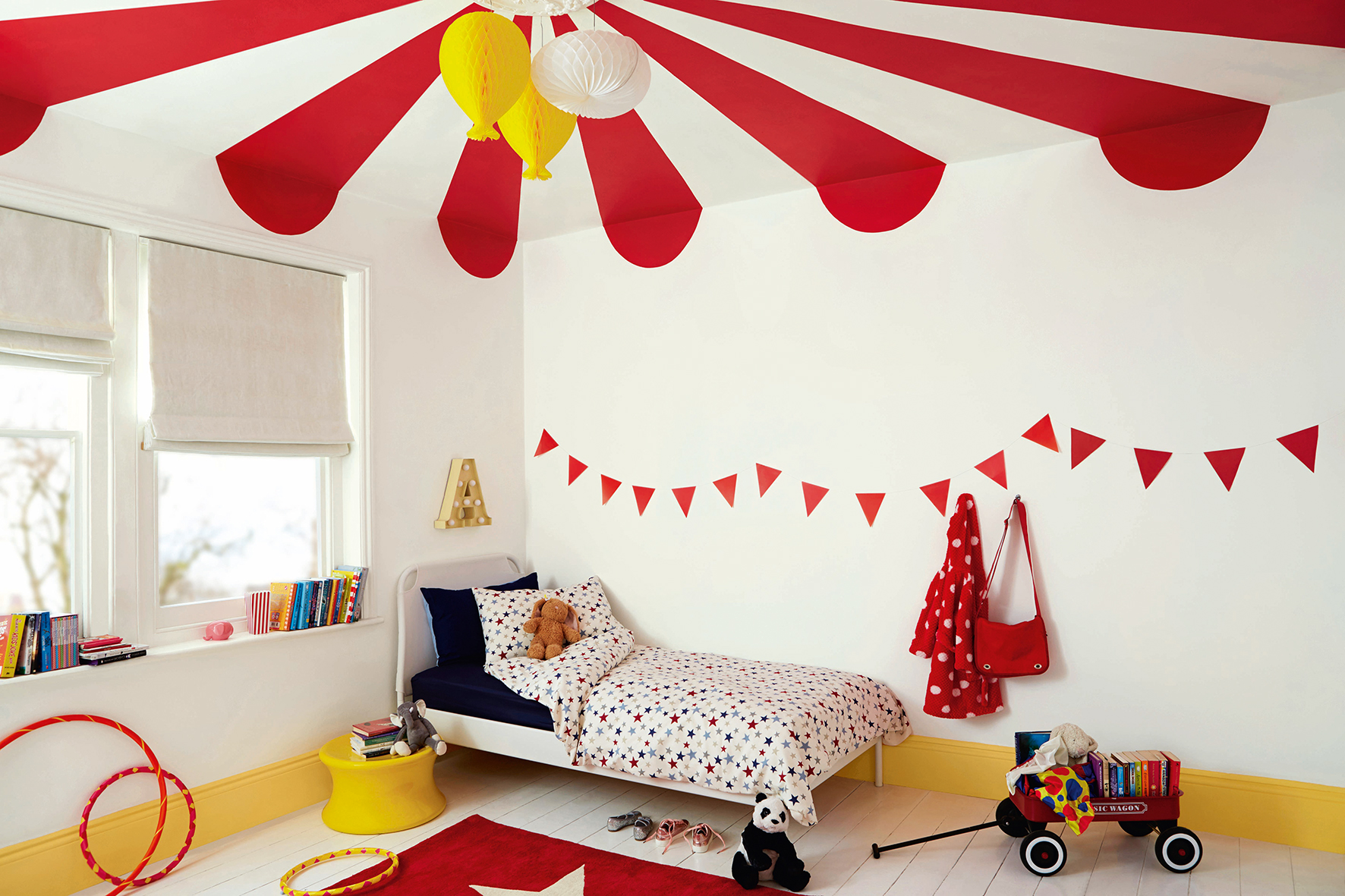
If you are feeling adventurous, why not try a simple but effective theme like this circus-inspired room? It’s a really fun way to inject colour into a room, and the color scheme will work for both boys and girls. Painting ceilings – whether plain or with patterns – is a hot trend at the moment; here, it cleverly represents the big top.
Painted in Pepper Red, the skirting is Banana Split and the main walls are White Cotton, all Dulux.
Not sure where to start when painting a ceiling? We suggest here, with our step-by-step guide.
Looking for more decorating ideas?
- Inspired to do more painting? Have a look at our living room paint ideas
- Want to get creative? Follow our guide to painting floor boards
- Give your little ones a great night's sleep with the best kids' beds







